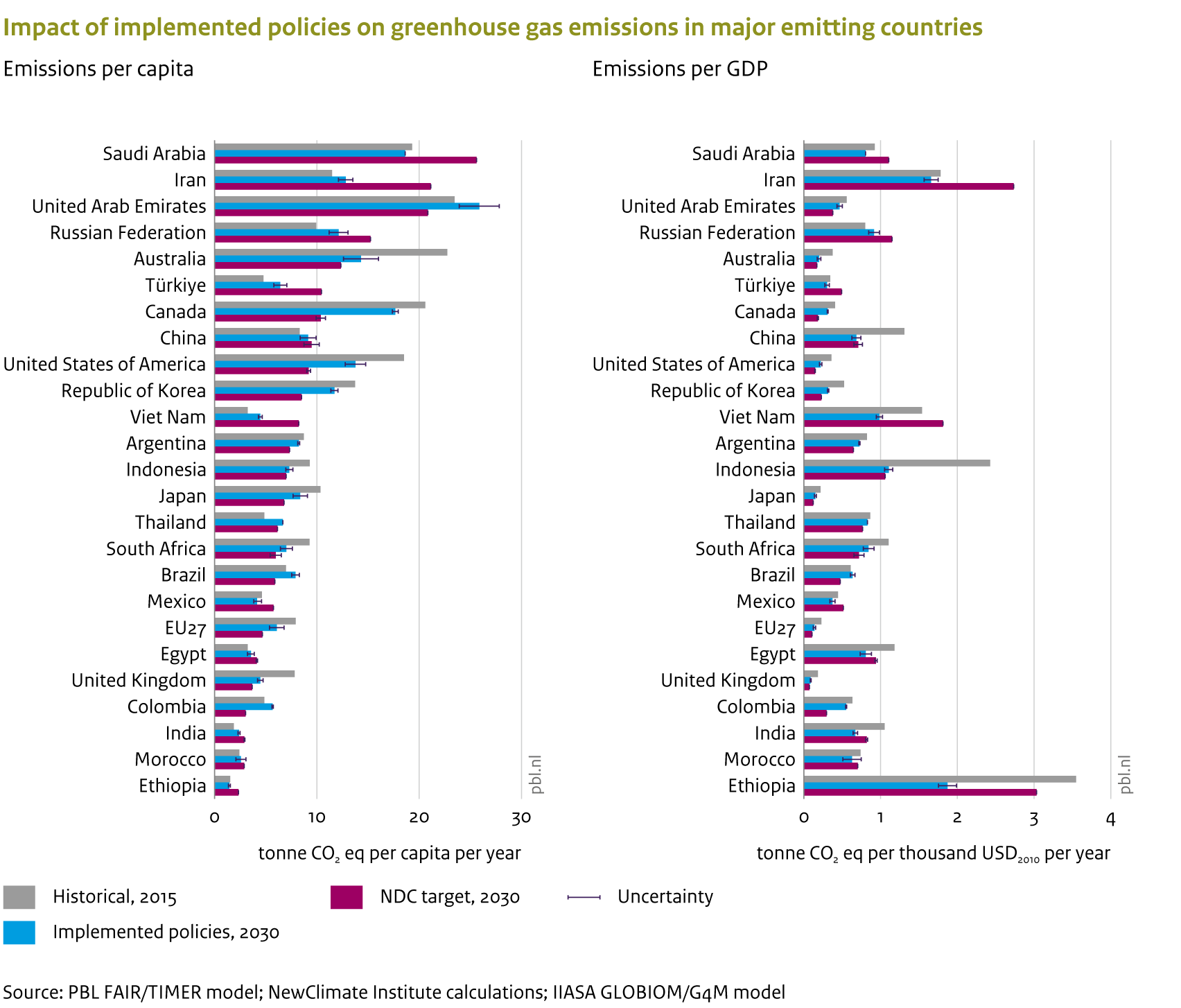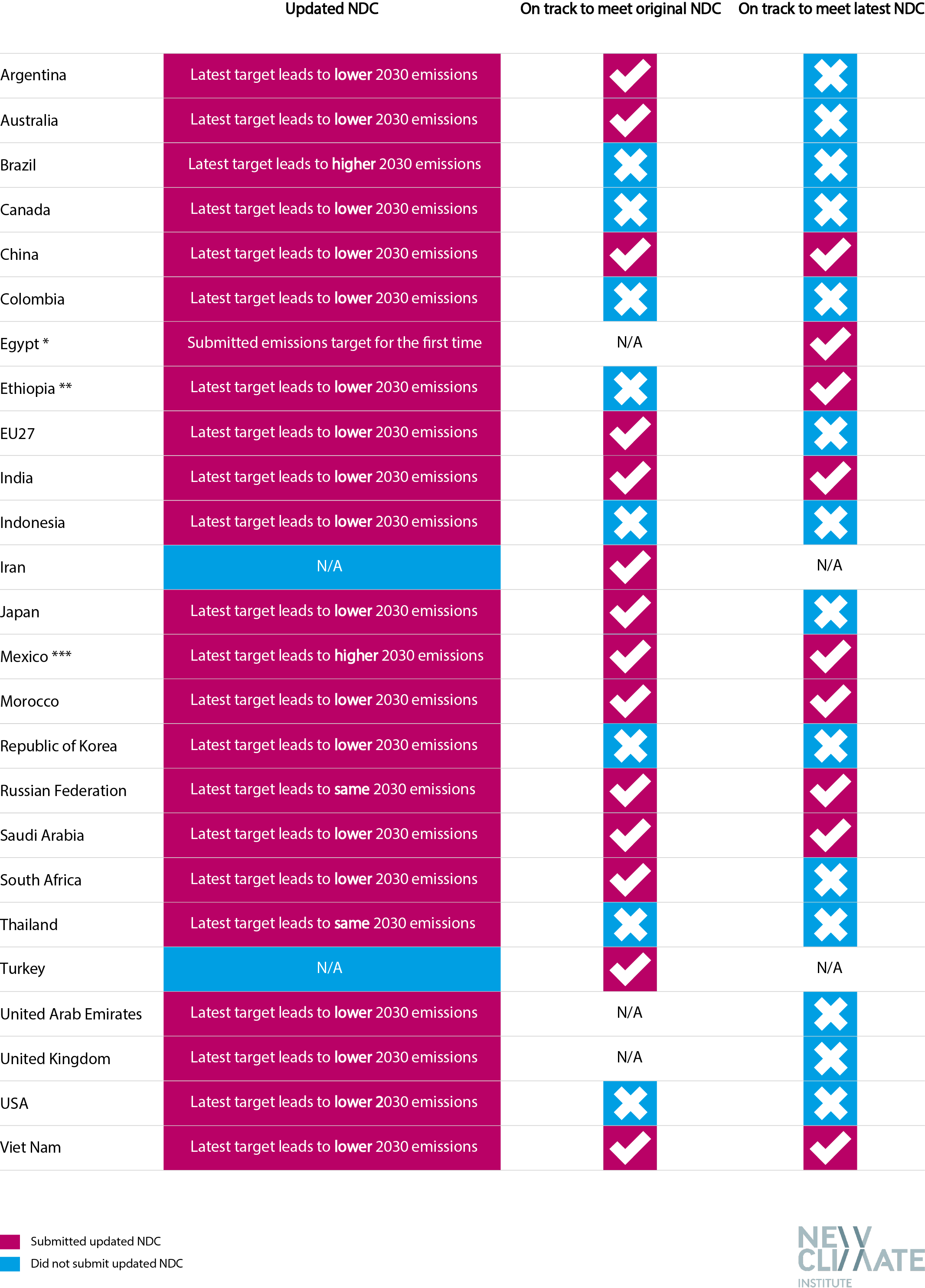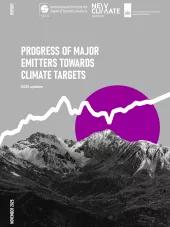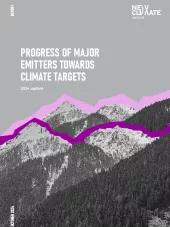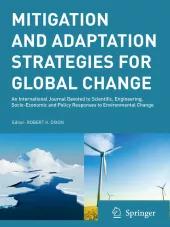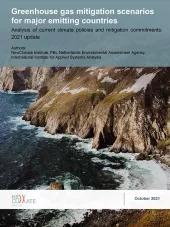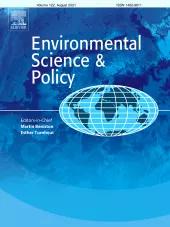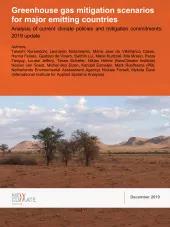Emissions under current policies in the group of countries analysed are projected to reach 36.2-41.8 GtCO2e by 2030, which corresponds to a change between -4% and +11% compared to 2019, pre-pandemic levels. This finding suggests that countries remain far off track to meet the collective goals of the Paris Agreement, which require emissions to be 43% below 2019 levels by 2030. Additionally, the Paris Agreement stated the aim of reaching a global peaking of emissions as soon as possible. This has not happened before 2020 and is not projected to happen before 2025, which is needed to keep the long-term goals of the Paris Agreement according with the latest scientific consensus.
Emissions per capita also vary substantially across scenarios (Figure 1). Emissions per capita in Türkiye and Viet Nam are expected to more than double between 2015 and 2030 under the countries’ NDC targets. While in Australia, Canada, United States, United Kingdom they are expected to fall by half in the same period. Average emissions per capita in both NDC and current policy scenarios are around 9 tCO2e, and there is significant overlap between the distribution under both scenarios. Of the 25 NDC targets analysed the average per capita emissions in 2030 is expected to reach 8.8 tCO2e per capita (range: 2.3 to 25.6 tCO2e). Looking at current policies, this value is 8.9 tCO2e (range: 1.4 to 25.9 tCO2e). On average, this represents a reduction in comparison to historical 2015 values – 9.6 tCO2e per capita (range: 1.5 to 23.5 tCO2e). We observe a reduction in NDC target emissions since our last update but no substantial change in the current policies scenario in most countries.
Figure 1: GHG emissions intensity per capita and GDP in 2030 under current policies (adopted up until June 2022) and NDC scenarios and compared to 2015 levels (figure produced by authors). The NDC target figures refer to unconditional target, except for Egypt.
During COP 26 in Glasgow, countries were invited to submit improved NDC targets because updated NDCs submitted remained insufficient to meet the collective goals of the Paris Agreement. However, out of the countries analysed, only Australia, Brazil, Egypt, India, Indonesia, the United Arab Emirates and the United Kingdom submitted new NDCs in 2022. In Egypt, India and Indonesia the updated NDC targets remain above current policy projections.
Eleven countries are on track to meet their latest NDCs targets (Table 1). This number remains unchanged compared to our 2021 update report. However, there are some national differences. Brazil was on track to meet its targets but is now off track due to an increase in land use emission projections. Indonesia was on track to meet its NDC unconditional target but is now set to miss it due to an increase in land-use historical emissions. Mexico was close to meet its target and now is well on track due to revision in emission inventories. Egypt did not have a quantifiable target in our 2021 and is now on track to meet its NDC target.

